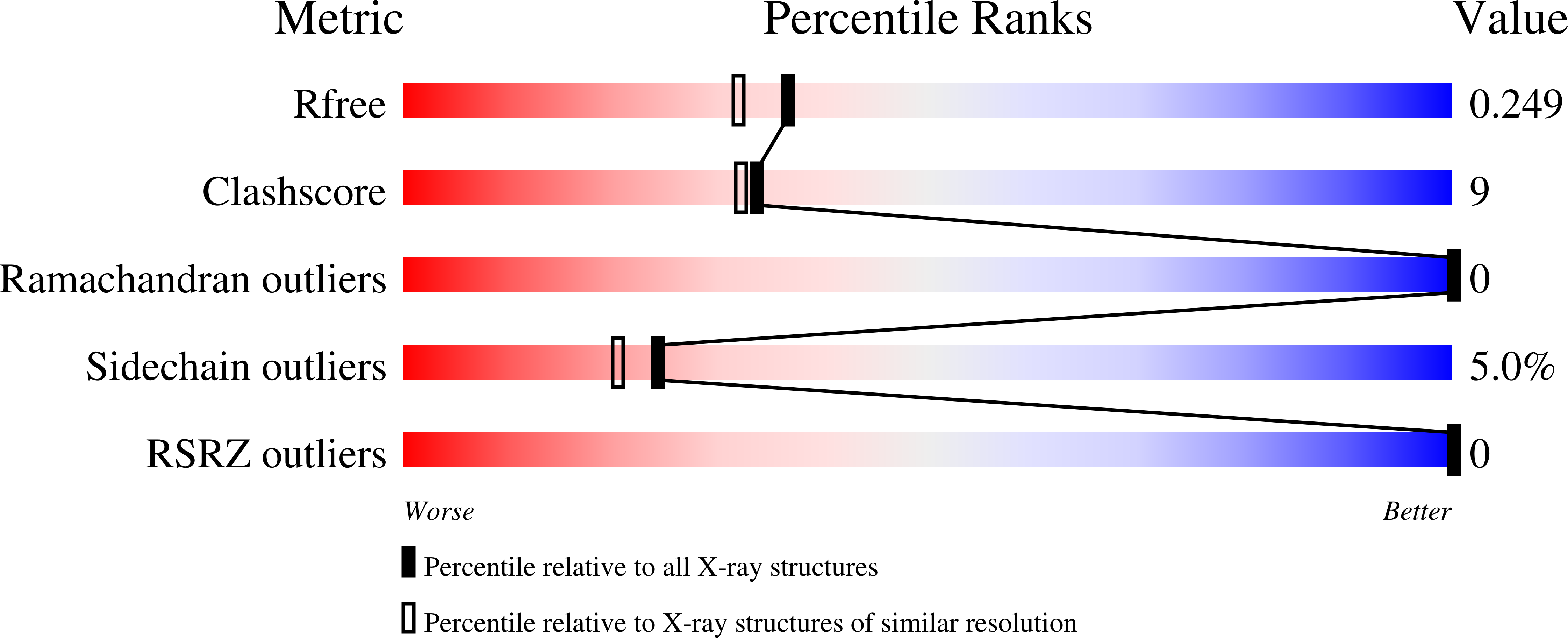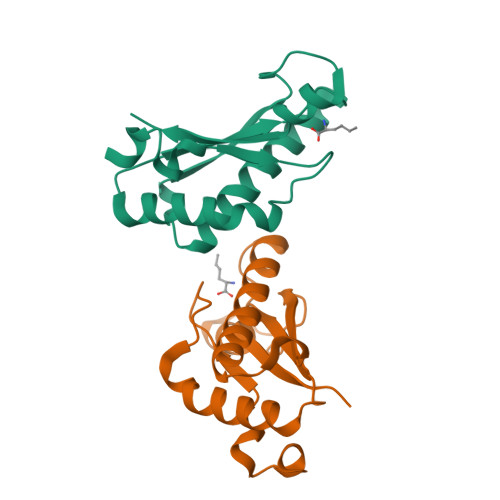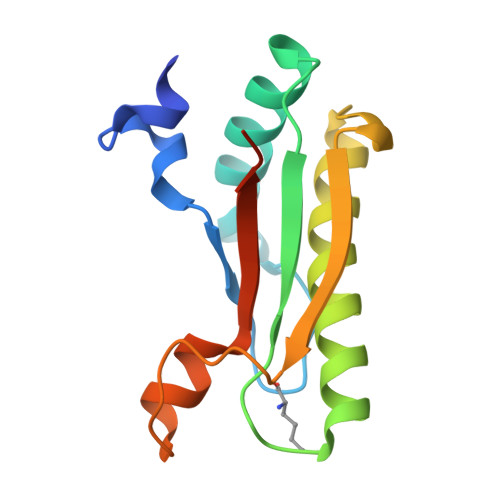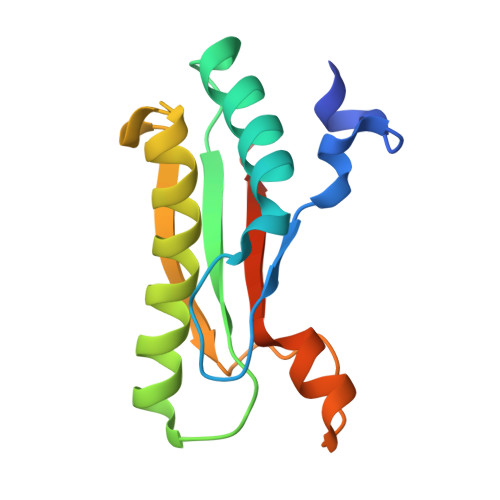The Burkholderia cenocepacia peptidoglycan-associated lipoprotein is involved in epithelial cell attachment and elicitation of inflammation.
Dennehy, R., Romano, M., Ruggiero, A., Mohamed, Y.F., Dignam, S.L., Mujica Troncoso, C., Callaghan, M., Valvano, M.A., Berisio, R., McClean, S.(2017) Cell Microbiol 19
- PubMed: 27886433
- DOI: https://doi.org/10.1111/cmi.12691
- Primary Citation of Related Structures:
5LKW - PubMed Abstract:
The Burkholderia cepacia complex (Bcc) is a group of Gram-negative opportunistic pathogens causing infections in people with cystic fibrosis (CF). Bcc is highly antibiotic resistant, making conventional antibiotic treatment problematic. The identification of novel targets for anti-virulence therapies should improve therapeutic options for infected CF patients. We previously identified that the peptidoglycan-associated lipoprotein (Pal) was immunogenic in Bcc infected CF patients; however, its role in Bcc pathogenesis is unknown. The virulence of a pal deletion mutant (Δpal) in Galleria mellonella was 88-fold reduced (p < .001) compared to wild type. The lipopolysaccharide profiles of wild type and Δpal were identical, indicating no involvement of Pal in O-antigen transport. However, Δpal was more susceptible to polymyxin B. Structural elucidation by X-ray crystallography and calorimetry demonstrated that Pal binds peptidoglycan fragments. Δpal showed a 1.5-fold reduced stimulation of IL-8 in CF epithelial cells relative to wild type (p < .001), demonstrating that Pal is a significant driver of inflammation. The Δpal mutant had reduced binding to CFBE41o - cells, but adhesion of Pal-expressing recombinant E. coli to CFBE41o - cells was enhanced compared to wild-type E. coli (p < .0001), confirming that Pal plays a direct role in host cell attachment. Overall, Bcc Pal mediates host cell attachment and stimulation of cytokine secretion, contributing to Bcc pathogenesis.
Organizational Affiliation:
Centre of Microbial Host Interactions, Institute of Technology Tallaght, Dublin, Ireland.


















